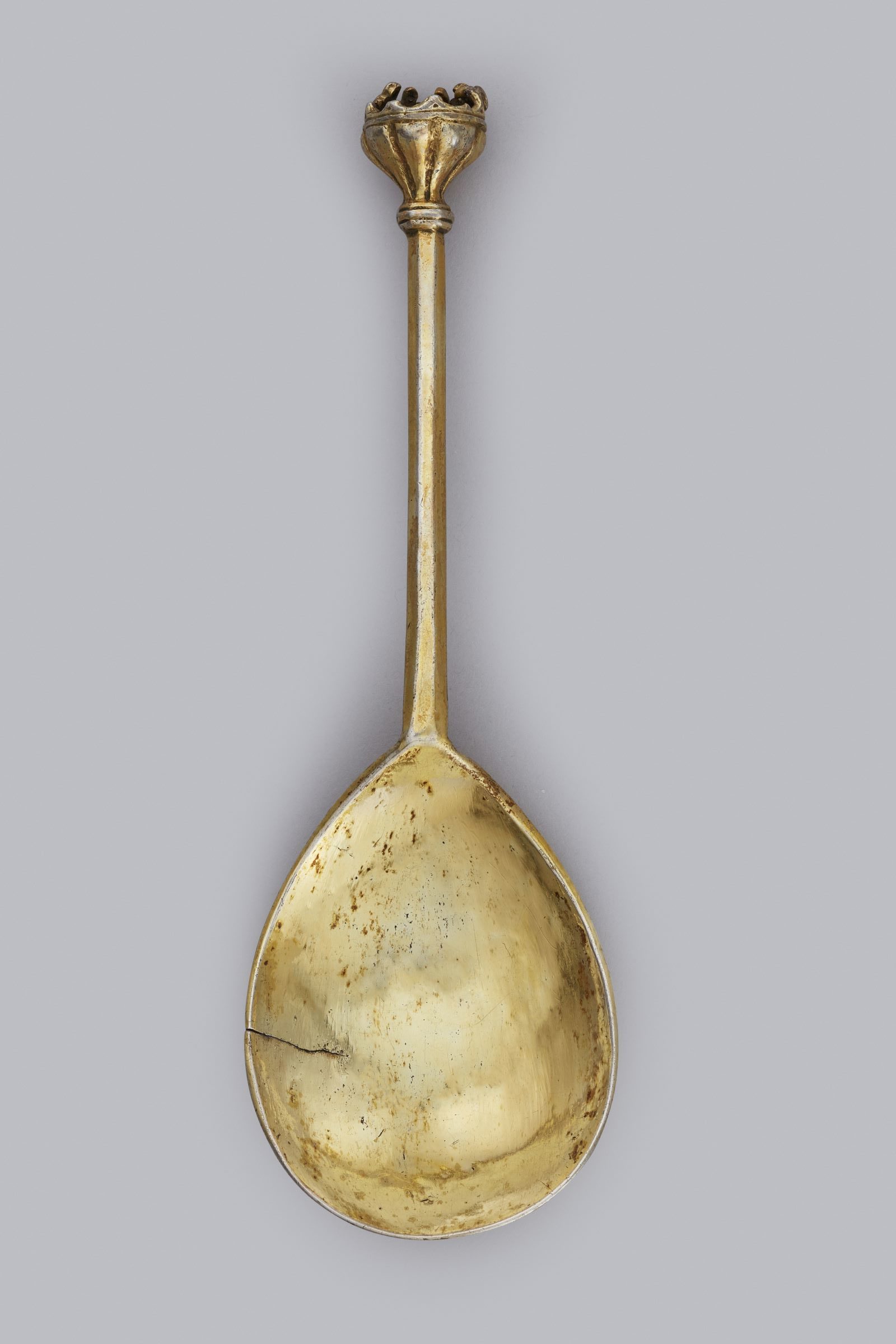
Spoon, c. 1400 [Si18]
Unmarked, c. 1400
Silver gilt: L. 17 cm, W. 5.5 cm, 58.9 g
Despite its damaged condition, this is one of the most impressive English medieval spoons. It is unusually heavy and elaborately decorated, with a hexagonal stem and a finial composed of a coronet of fleurs-de-lis, bent inwards probably to hold a jewel, now lost.
The spoon is traditionally associated with William of Wykeham and is referred to as the ‘Founder’s Spoon’ in the Bursars’ accounts for 1672/73: ‘Pro deaurando et reficiendo antiquo cochleari vocato The Founder’s Spoone – 0.6.6.’ [For gilding and repairing an old spoon called ‘The Founder’s Spoon’ – six shillings and six pence.]
Correspondence in the College archives shows that there was, in the 1960s, some debate about the dating of this spoon. Charles Oman described it as ‘early fifteenth century’ while Mrs G.E.P. How, the leading authority on medieval spoons, thought it could not be earlier than about 1430 – and therefore certainly not Wykeham’s spoon, though in an earlier publication (1952) the Hows had dated it to the second half of the fourteenth century. In the absence of hallmarks, the spoons of this period are difficult to date with precision. When it was exhibited at the Royal Academy in 1987, this piece was dated c. 1400 and presented alongside items known to have been owned by Wykeham.
Exhibited: ‘Age of Chivalry’, Royal Academy of Arts, London, November 1987 – March 1988, no. 611.
Literature: G.E.H and J. How, English and Scottish Silver Spoons (London, 1952), vol. 1, pp. 75, 352 (illustrated); Charles Oman, ‘The Winchester College Plate’, The Connoisseur (January, 1962), p. 25 (illustrated); J. Alexander and P. Binski (eds.), Age of Chivalry: Art in Plantagenet England, 1200-1400 (London, 1987), p. 474 (illustrated); O. Rackham, Treasures of Silver at Corpus Christi College Cambridge (Cambridge, 2002), p. 80; R. Foster, Winchester College Treasury: a guide to the collections (Winchester, 2016), p. 18 (illustrated).
Provenance: unknown, first recorded in 1672/73.
Location: Treasury, Gallery 1.